- Barbastella
- Eptesicus
- Myotis
- Nyctalus
- Pipistrellus
- Vespertilio
Whiskered bat Myotis mystacinus
The whiskered bat (Myotis mystacinus) is often difficult to recognize because the individual animals vary greatly in their coat color. There is a particular risk of confusion with Brandt's bat (Myotis brandtii). They were not described as separate species until 1970. A third species of the whiskered bats, the Alcathoe whiskered bat (Myotis alcathoe), was even described as late as 2001. In order to morphologically distinguish all 3 species from each other, it is necessary to look at certain dental characteristics with the help of a magnifying glass. It is therefore extremely difficult to distinguish between these species in hibernation or in photographs.
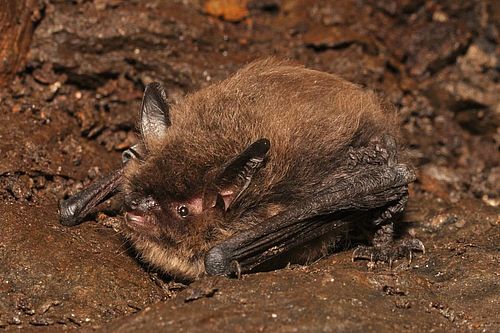
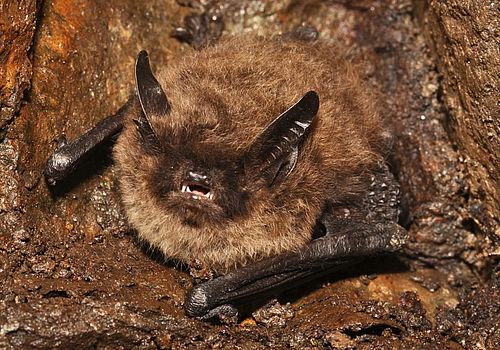
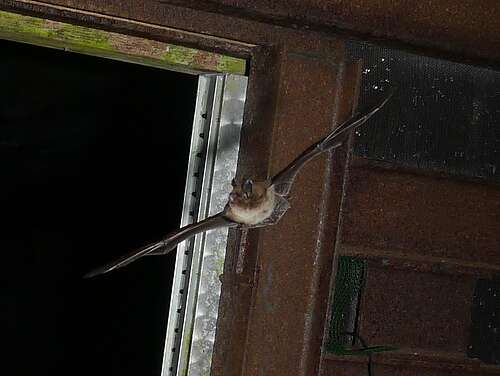
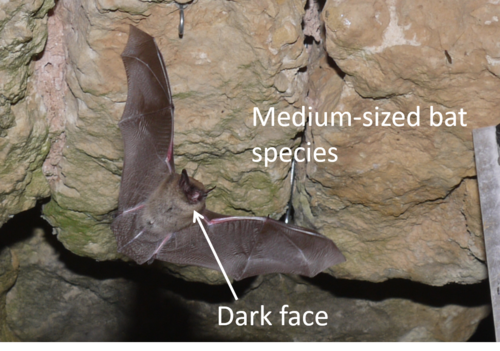
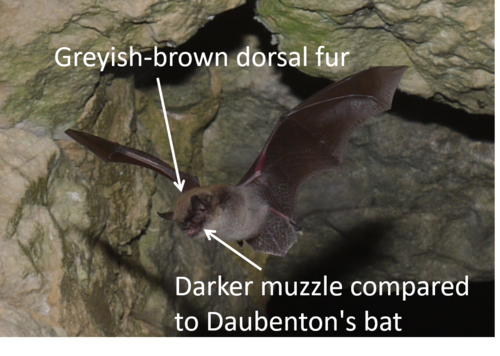
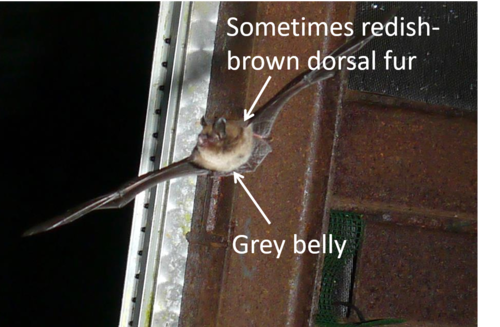
| habitat description | Similar to its sister species, it is strongly bound to forests, also found on forest edges, aisles, water bodies, wetlands and bogs, rarely meadows or settlements. |
| quarters | Nursery colonies of about 20-60 individuals in tree hollows, behind bark solution, shutters, facades and house crevices in areas close to forests, occasionally narrow bat or bird boxes. Hibernates underground in caves and tunnels from October to April, rarely migrating further distances. |
| reproduction | Birth of a maximum of two young in mid to late June. Swarm at winter roosts as early as early August. |
| size | - Head-torso length:36 - 48 mm - Forearm length:32.0 - 36.5 mm - Wingspan: 190 - 230 mm |
| weight | 4–9 g. |
| color/fur | Upper side dark gray-brown. Underside very variable, often grayish. Some animals show golden or reddish hair tips. Dark brown to black face, even ears, which are hardly lightened inside, in contrast to Brandt's Bat. |
| ear shape | Long, with 4-5 transverse folds. Lanceolate, long tragus, about half the length of the ears. |
| wing shape | Narrow and relatively pointed |
| flight | Agile, sinuous flight. Hunts along paths and aisles in forest, forest edges and hedgerows, and small bodies of water. |
| ultrasonic calls | Strongly frequency modulated calls with start frequencies at 75 - 120 kHz and end frequencies at 28 - 40 kHz. Main frequency at 40 - 55 kHz, often around 44 kHz. Dry, relatively regular calls. Differentiation from the calls of Brandt's bats is practically impossible, also difficult to distinguish from Daubenton's and Natterer's bats. |
| endangerment | Local population declines due to building renovations and habitat loss. Red List of Germany (2020): Not endangered. IUCN(2016): Least Concern. |